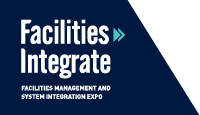With technology rapidly changing and improving the way buildings are designed, built, managed and operated, what can we expect our offices, schools, hospitals, apartments, airports and industrial buildings to look like in the future?
It is as exciting as it is difficult to comprehend, says North Port Events CEO Dona White, but already there are examples of applied technology emerging which point to a radically different future.
"Buildings are synonymous with human civilisation, with the oldest known structures erected some six thousand years ago. We've come a long way since then and in recent times, the introduction of technological enablement to modern facilities means an unprecedented new wave of development is about to hit," says White.
Valuable insights into the technology which is today being used in new buildings, or introduced into older ones undergoing refits, will be on display at her company's annual Facilities Integrate expo. Taking place at the ASB Showgrounds on 27 and 28 September, this year's show introduces a Tech World exhibition, reflecting the increased availability and use of a wide range of computerised systems in today's structures.
White notes that the oldest known building (as opposed to structure) is the Cairn of Barnenez in northern France; ironically, that structure was built as a monument for the dead, while today's introduction of technology to buildings is very much focused on the comfort of the living.
Among the radical changes that are possible today and which may become widespread in new buildings are:
• Offices that feature colour-changing walls, 3D printers capable of producing food and office supplies on-demand, elevators which don't just go up and down, but also side to side, and hologram receptionists with full interactive capability. The 'digital workplace', already being introduced by some companies in New Zealand provides workers with flexible, ergonomic workspaces designed to encourage collaboration, while maximising spatial efficiency.
• Schools, where already the blackboard and duster are giving way to the introduction of advanced networking, interactive whiteboards, iPads and laptop computers, will see learning aids further enhanced by augmented and virtual reality. Just like offices are being redesigned, learning spaces are evolving, driven by enhanced attention to ergonomics and optimised environments for teaching and study.
• Hospitals are receiving a major boost from technology that will help deliver the capabilities to manage an ageing population. Technology like advanced surgical robots, 3D printed organs and sterile materials, will be joined by virtual doctors capable of handling more patients in less time. Virtual and augmented reality solutions will help improve access to healthcare, while equipping practitioners to become more effective than ever before.
• Apartments will be better designed, cleaner and ready to embrace new ways of living. Robotic devices will clean and help prepare meals, while ever-bigger screens will enhance ambience by integrating the outdoors with the indoors. Amenities such as USB ports, already commonplace, will be joined by electric car chargers, while sustainability gets a further boost with technology for rainwater harvesting and purification, and solar capture and storage systems.
• Airports are transforming already, with automated check-in and passport control already making trips faster and easier for travellers. Expect autonomous cars for terminal transfers (some airports already have automated trains), while safety will be assured with reduced intrusion on the individual through biometrics including eye scanners and other sophisticated sensors.
• Industrial buildings will become smaller and more efficient, with modern ergonomic design considering the possibility of natural disasters. Green energy usage will expand as efficiency is recognised as a component of lower cost production. Inside, robotics and automation will continue to be prevalent, along with 3D printing, manned by 'factory workers' who are highly skilled technicians, engineers and programmers.
These developments, says White, dramatically impact how buildings are being designed today. But it also impacts how older buildings are being renovated and refitted for the future. "Most of our structures in New Zealand have been here for decades - but that doesn't mean the technological revolution is passing them by."
For more insights into technology that is impacting how buildings are designed, constructed and managed, register for the Facilities Integrate trade-only exhibition taking place at the ASB Showgrounds on 27 and 28 September. This year's event introduces Tech World, where the latest information technology solutions for buildings will be showcased. Attendance is free with pre-registration, or $25 at the gate on the day. Professionals in all aspects of the design, construction and management of the built environment will enjoy an unmatched opportunity for learning, networking and trading.

